GREEN RIVER BASIN PLAN II
BAG Meeting No. 3
Meeting Notes
May 22, 6:00 PM
Municipal Courtroom
Lyman Town Hall
The meeting generally followed the format of the agenda distributed by the
WWDO:
1.Introductions
Earl Degroot, Facilitator on the Planning Team, introduced the team and
presented several logistical details about the meeting.
2.Description and purpose of meeting
Earl presented a power point slideshow outlining the purpose of the planning
process, explaining the handouts at the meeting, and the methods through which
the State and Planning Team was collecting input. That presentation is available
at waterplan.state.wy.us
3.Consultant update
Murray Schroeder presented information and exhibits’ showing the progress the
consulting team has made making population projections in the basin. That
information is available at waterplan.state.wy.us. There were several questions
from the audience related to the methods used to make the projections.
4.Presentations
An important goal of the BAG Update process is to advance the BAG’s
identification and discussion regarding strategies for resolving basin water use
issues. The previous 2001 plan identified many issues, but did not address in
depth how those issues might be resolved. With a goal of identifying strategies,
this and future BAG meetings are designed to have public presentations from a
variety of BAG members. The presentations are intended to present the BAG
member’s ideas about what their specific challenges are and what some of the
strategies might be for addressing the challenges. By design, this public meeting
setting is intended to foster an open discussion about strategies.
To this end, this meeting had two presentations, each followed by a strategies
discussion in which ideas were recorded by the planning team. Those ideas were
recorded on large paper flip charts (photos attached).
Presentations were as follows:
A. Uinta County Conservation District; Kerri Sabey, discussed the impaired
stream classification on the Blacks Fork and Smiths For (sediment and fecal
coli form) and the conservation district’s strategies for correcting the problem.
There first strategy is to follow a watershed plan and they are implementing a
couple programs that have come out of that plan. The programs include a
septic system remediation program and an animal feedlot operations program.
The septic systems program has been used to relocate or install septic systems
near the streams where treatment was not being practiced. The feedlot
operations program is used to evaluate and fund water gap construction,
reconstruct corrals away from water bodies and drilling wells on the open
range to encourage dispersing of cattle.
The second strategy to address the water quality issues in the area was to
continue the data collection work they are doing at this time. Hopefully, with
time, the efforts mentioned above will start to show positive improvements in
the water quality data.
B. Ken Fackrell, Bridger Valley Water Conservancy District, discussed the
operation of the dams serving water users in the district, including Meeks
Cabin and State Line dams. Ken presented many slides on the projects and
facts concerning their design and operation.
The primary issue facing the group is the lack of water storage to meet needs.
Strategies that are being performed to alleviate shortages include studies by
the USBR and a paleo study of floods. The paleo study of floods may be used
to document a smaller PMF than theoretically possible, allowing for more
reservoir storage (Meeks Cabin) to meet delivery needs as opposed to
temporary flood storage.
Ken mentioned that the West Fork of the Smith’s Fork is not dammed and that
they would like to catch that water. A possible study should be evaluated for
this.
Ken also commented on the possible raise of Meeks Cabin.
C. In addition to listening to the issues and strategies presentations from above,
the meeting included a broader discussion of the issues and strategies in the
basin and these included:
- Issue of beetle kill in forest, reservoir sedimentation and resultant
water storage loss in reservoirs. No strategies were offered to address
this issue.
- Population increases and water demand increases. The question was
“How to be prepared” for this condition. The discussion centered on
how to justify storage projects without having actual demand. Mr.
Tyrell commented that it is difficult to show need that exceeds
current demands when it comes to agricultural projects. Municipal
projects have more latitude to grow into water use.
- Water Right Protection to Protect Future Use. Strategies to address
this issue that were brought up by the audience included the
continued funding of basin and state water planning efforts. In
addition, there seemed to be a consensus in the audience that the
state ought to support smart projects with dollars.
- The issue of how consumptive use of water will increase with
climate change was brought up, and the thought that it would apply
to all use sectors including municipal water use and agricultural
water use. The strategy mentioned to address this was to factor this
into the planning efforts of the state.
- Finally, the Oil Shale issue was mentioned and its potential impact
on the water supply. The audience agreed that this should be studied
in state funded water planning.
D. Pat Tyrrell, SEO; Update on Colorado River Basin Topics
Pat gave an update on several issues affecting water use in the Green River Basin,
including the much improved outlook for water supplies across the state this year.
His presentation will be available at waterplan.state.wy.us
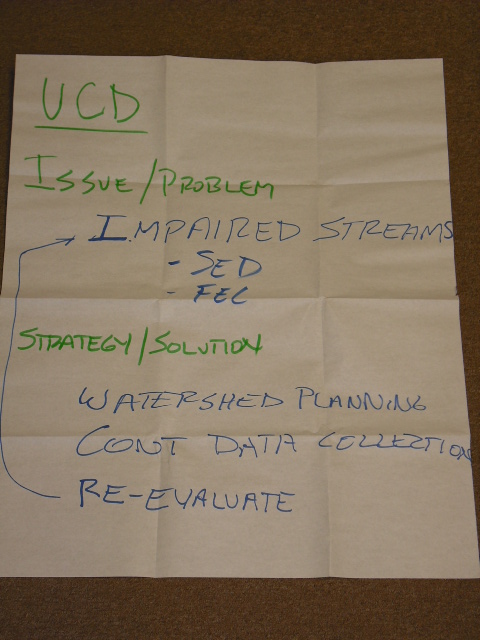
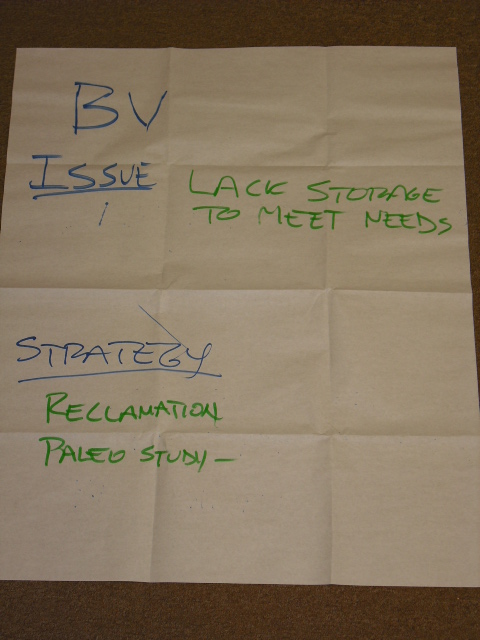
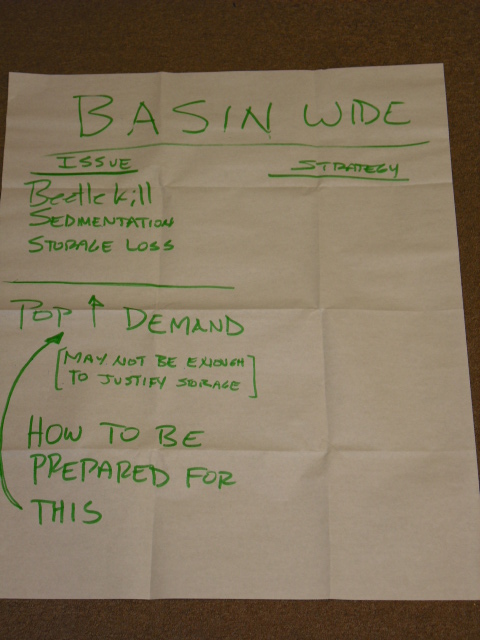
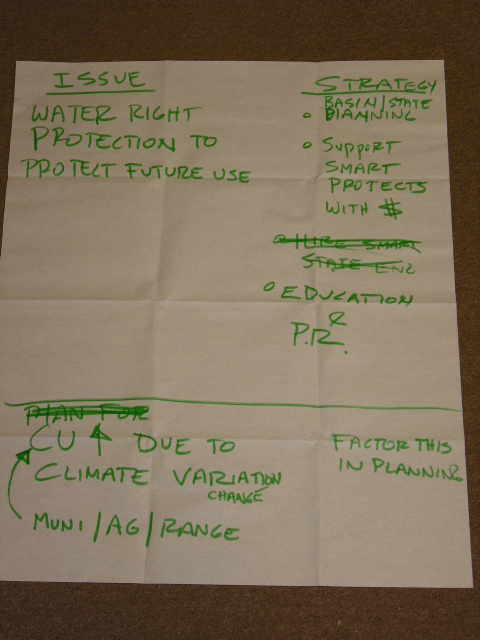
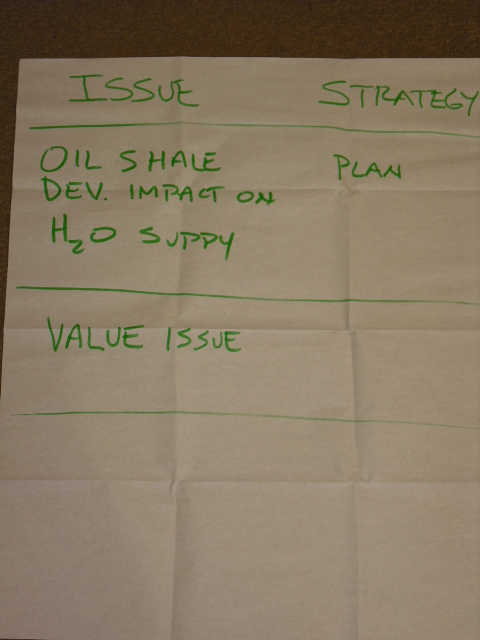
|